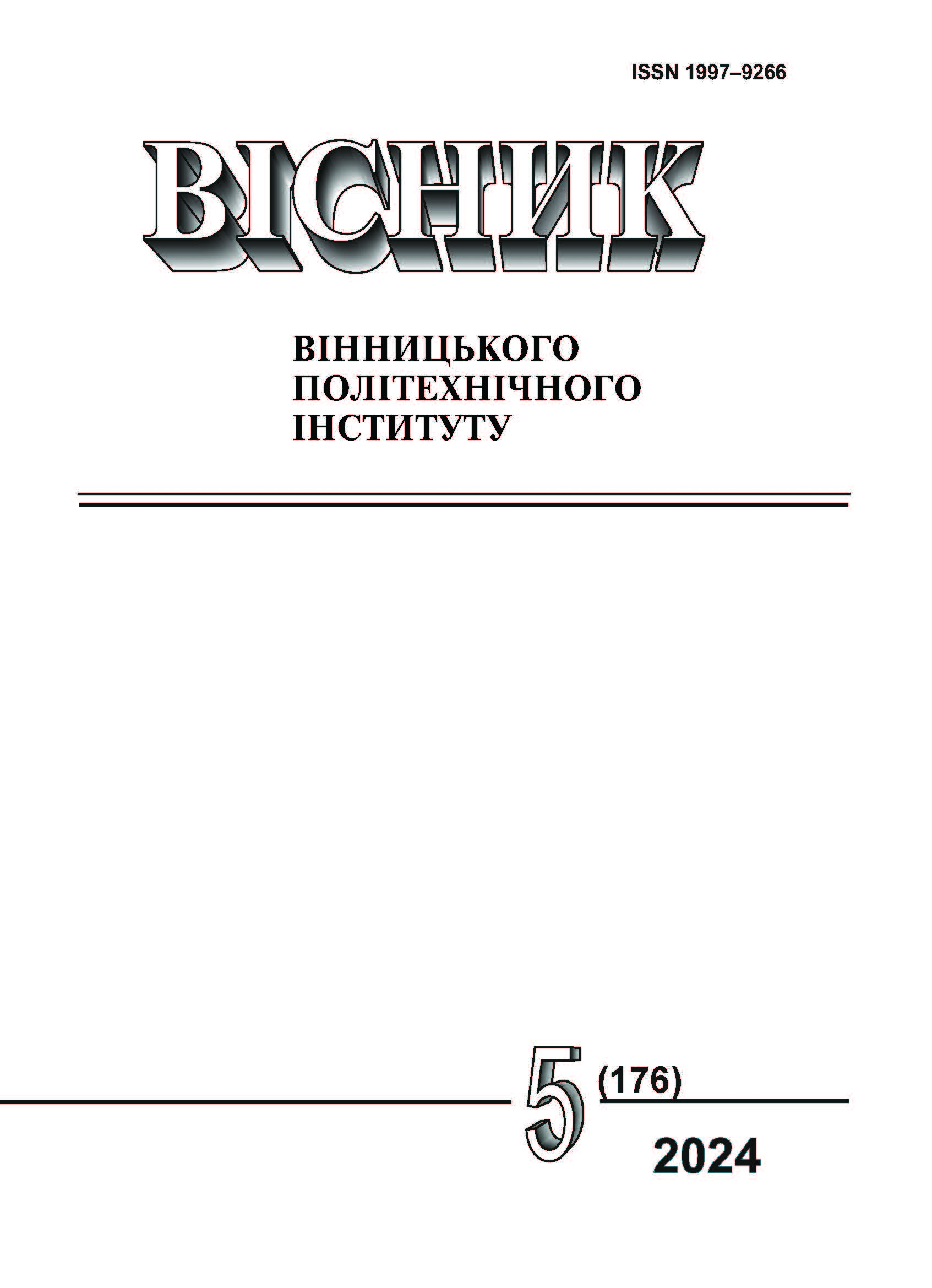Formation of Metal -Ceramic Plasma Coatings with Aluminum Hydroxide Addition
DOI:
https://doi.org/10.31649/1997-9266-2024-176-5-71-76Keywords:
atmospheric plasma spraying, aluminum hydroxide, composite coatings, microhardnessAbstract
Thermal spraying due to slight heating, minimizing thermal deformation and the absence of structural changes in the surface of the products allows to effectively form protective composite coatings of various compositions. One of the most promising is the coating with aluminum oxide, which is characterized by high hardness, heat resistance, chemical inertia and high thermal protection and electrical insulation properties. Among other thermal spraying methods, plasma spraying is the most versatile and effective. As a result of the combination of wire (wire brand ER5356) plasma spraying with simultaneous supply of powder material, a composite coating consisting of an aluminum matrix and particles of aluminum hydroxide was formed. It is shown that the microstructure of the coating has a characteristic lamellar structure with a porosity of about 15 %. The microhardness of the aluminum matrix is 0,32 GPa. The particles of aluminum hydroxide and its decomposition products are partially exposed in the preparation of cross-sections, which is explained by the formation of conglomerates and insufficient wetting of aluminum particles in the formation of the coating. It is established that during the spraying active release of water vapor due to the process of thermal dehydration of aluminum hydroxide is observed. Further formation of oxide ceramics in the coating structure is proposed by the heat treatment at 900 °C for 2 hours. Metallographic analysis of samples showed the formation of aluminum particles at the site of aluminum hydroxide (α and γ) with a microhardness of 5,2… 7,2 GPa. Significant decrease in the amount of metal light phase compared to the condition after spraying is noted, which is explained by the oxidation of aluminum by the products of decomposition of aluminum hydroxide in the process of heat treatment. The boundary of the "coating-substrate" separation is characterized by the presence of a diffusion zone with a depth of about 80 microns. X -ray analysis determined that the coating after heat treatment contains: 52,2 % of corundum (α-Al2O3), 4,5 % γ-Al2O3, 28,2 % aluminum, 13,7 % of iron, 1,5 % silicon.
References
W. Zhao, et al., “Developing rotary swaging process for improving the performance of wire-arc sprayed Al/Al2O3 composite coating,” Surface and Coating Technology, vol. 484, pp. 130840, 2024, https://doi.org/10.1016/j.surfcoat.2024.130840 .
J. Cheng, et al., “Microstructure and tribocorrosion behavior of Al2O3/Al composite coatings: role of Al2O3 addition,” Journal of Thermal Spray Technology, vol. 29, pp. 1741-1751, 2020. https://doi.org/10.1007/s11666-020-01062-1 .
J. Huang, Y. Liu, and H. Li, “Al/Al2O3 composite coating deposited by flame spraying for marine applications: alumina skeleton enhances anticorrosion and wear performance,” Journal of Thermal Spray Technology, vol. 23(4), pp. 676-683, 2014. https://doi.org/10.1007/s11666-014-0056-7 .
N. Ullah, et al, “Cold spraying of Al-5Si/Al2O3 composite coatings on AZ31 Mg alloy: Microstructure, adhesion strength, and tribological properties,” Surface and Coating Technology, vol. 479, pp. 130543, 2024. https://doi.org/10.1016/j.surfcoat.2024.130543 .
X. Yu, et al., “Microstructure and wear-resistant behaviors of Al2O3-TiO2 reinforced Ni-based composite coating plasma-sprayed on 6061 aluminium alloy,” Surface and Coating Technology, vol. 487, pp. 131032, 2024. https://doi.org/10.1016/j.surfcoat.2024.131032 .
W. Li, Y. Yang, H. Li, X. Zhang, Y. Wang, and W. Tian, “TEM characterization and reaction mechanism of composite coating fabricated by plasma spraying Nb–SiC composite powder,” Ceramic International, vol. 49, pp. 15055-15064, 2023. https://doi.org/10.1016/j.ceramint.2023.01.088 .
A. Encalada, et al., “Wear behavior of HVOF sprayed cobalt-based composite coatings reinforced with Cr3C2,” Wear, vol. 546-547, pp. 205310, 2024. https://doi.org/10.1016/j.wear.2024.205310 .
А. А. Карпеченко, і М. М. Бобров, «Вплив передрекристалізаційної термічної обробки на фізико-механічні властивості функціональних електродугових композиційних покриттів,» Вісник Вінницького політехнічного інституту, № 2, с. 94-100, 2022. https://doi.org/10.31649/1997-9266-2022-161-2-94-100 .
Y. Huang, et al., “Study on properties of pure Al coatings and Al/SiC composite coatings by plasma transferred wire arc spraying,” Journal of Thermal Spray Technology, vol. 33, pp. 1709-1724, 2024. https://doi.org/10.1007/s11666-024-01775-7 .
R. Manikandan, T. Arjunan, R. Akhil, and O. Nath, “Studies on micro structural characteristics, mechanical and tribological behaviours of boron carbide and cow dung ash reinforced aluminium (Al 7075) hybrid metal matric composite,” Composites Part B: Engineering, vol. 183, pp. 107668, 2020. https://doi.org/10.1016/j.compositesb.2019.107668 .
W. Wang, D. Ren, X. Zhang, W. Du, S. Zhu, and H. Li, “Preparation and characterization of supersonic plasma sprayed Al–Al2O3–Cr2O3 composite coatings on magnesium alloy substrate,” Ceramics International, vol. 50, pp. 13388-13399, 2024. https://doi.org/10.1016/j.ceramint.2024.01.251 .
F. Aydin, “A review of recent developments in the corrosion performance of aluminium matrix composites,” Journal of Alloys and Compounds, vol. 949, pp. 169508, 2023. https://doi.org/10.1016/j.jallcom.2023.169508 .
В. В. Примаченко, В. В. Мартиненко, Е. Л. Карякіна, К. І. Кущенко, і Л. А. Дергапуцька, «Електронномікроскопічні дослідження фазо- і структуроутворення у процесі термообробки гідраргіліту,» Вісник НТУ «ХПІ», № 4, с. 115-120, 2008.
Downloads
-
pdf (Українська)
Downloads: 65
Published
How to Cite
Issue
Section
License

This work is licensed under a Creative Commons Attribution 4.0 International License.
Authors who publish with this journal agree to the following terms:
- Authors retain copyright and grant the journal right of first publication.
- Authors are able to enter into separate, additional contractual arrangements for the non-exclusive distribution of the journal's published version of the work (e.g., post it to an institutional repository or publish it in a book), with an acknowledgment of its initial publication in this journal.
- Authors are permitted and encouraged to post their work online (e.g., in institutional repositories or on their website) prior to and during the submission process, as it can lead to productive exchanges, as well as earlier and greater citation of published work (See The Effect of Open Access).





